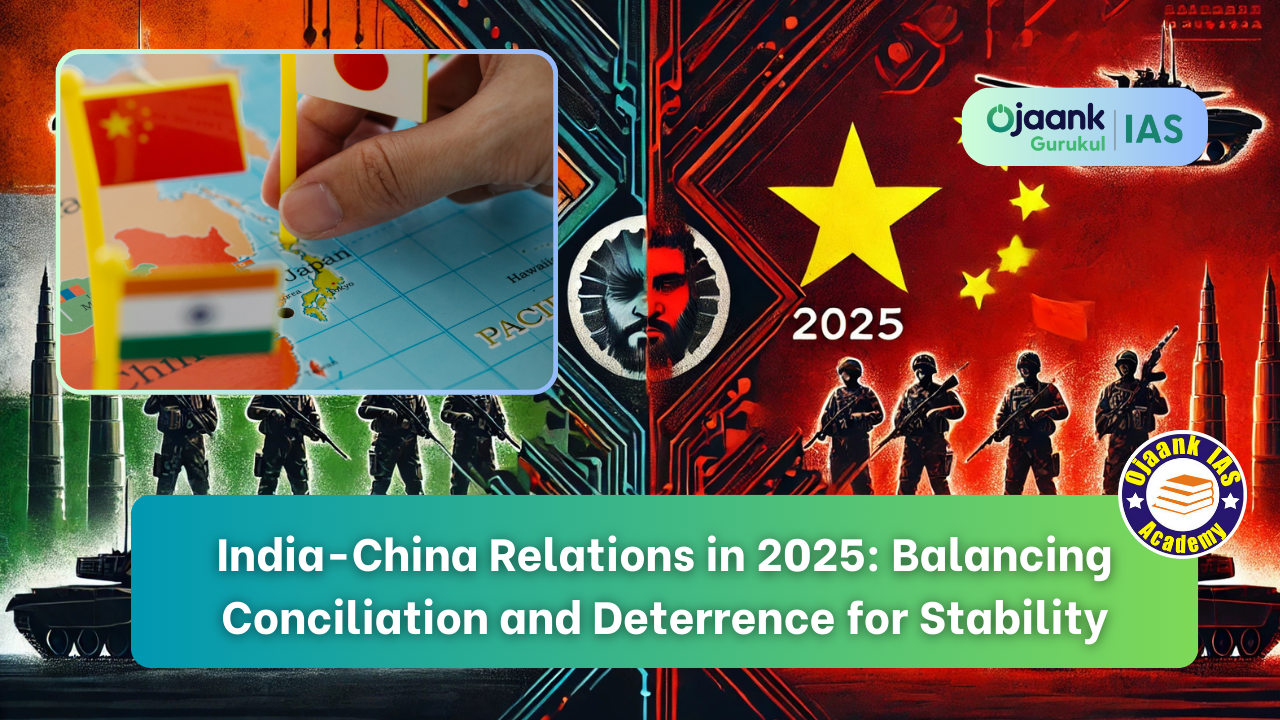India-China Relations in 2025: Balancing Conciliation and Deterrence for Stability

🛡️ Introduction: A Delicate Dance with a Giant Neighbor
In March 2025, the world watches as India and China, two Asian giants, navigate a relationship teetering between rivalry and reconciliation. Prime Minister Narendra Modi’s recent podcast remarks—his warmest toward China in years—signal a potential thaw after the icy tensions of 2020.
Calling for dialogue to foster a “stable, cooperative relationship”, Modi’s words hint at a new chapter. Yet, beneath this conciliatory tone lies a stark reality:
-
China’s history of aggression and
-
Economic dominance
demand that India wield a sharp sword alongside its olive branch.
This blog dives into why India must balance conciliation with deterrence to secure its future—and why this matters globally.
🌏 The Current State of India-China Relations
To understand today’s dynamics, we must rewind to 2020.
That year:
-
Chinese incursions across the Line of Actual Control (LAC) in Ladakh sparked a deadly skirmish.
-
20 Indian soldiers lost their lives, shattering decades of uneasy peace.
-
The fallout led to a diplomatic deep freeze, but military talks gradually disengaged forces from key friction points.
By October 2024, a surprising deal resolved the last two incursion sites, paving the way for normalization.
📊 Trade Resilience Amidst Tensions
Despite the border crisis, India-China bilateral trade soared to record highs, underscoring China’s role as India’s largest trading partner.
-
In 2024, bilateral trade crossed $130 billion, despite ongoing border disputes.
-
In March 2025, Modi emphasized dialogue as “essential for global stability and prosperity” in his podcast.
-
Chinese officials welcomed the sentiment, fueling speculation of a broader policy shift.
But is this a genuine pivot or a tactical pause in a structural rivalry?
🤝 Why India is Leaning Toward Conciliation
1️⃣ Economic Realism
-
China’s GDP is over 4 times larger than India’s.
-
Seeking stability with such a giant neighbor is pragmatic for economic growth.
-
Defusing military tensions with a key trading partner makes strategic sense.
2️⃣ Shifting Global Geopolitics
-
The Trump administration's return in 2025 has muddied U.S. policy waters.
-
With Trump imposing tariffs on China but slashing defense spending, U.S. unpredictability is a concern.
-
India, which relies on U.S. intelligence to monitor Chinese border threats, now seeks independent stability with China.
3️⃣ Strategic Flexibility
-
Modi’s comments reflect diplomatic flexibility, not full commitment to conciliation.
-
India is testing the waters, possibly reverting to the early Modi-era optimism of summits with Xi Jinping.
-
At the same time, India maintains its Quad partnerships with the U.S., Japan, and Australia.
⚠️ The Risks of Over-Reliance on Stabilization
Conciliation sounds appealing but carries significant risks:
-
China’s Expansionist Streak:
-
Despite past summits, China has continued border provocations.
-
The 2020 Ladakh crisis was a stark reminder of Beijing’s expansionist tendencies.
-
-
Weakening Military Preparedness:
-
India’s defense spending as a share of GDP has steadily declined over the past decade.
-
Relying too heavily on dialogue without bolstering military capabilities risks leaving India vulnerable.
-
-
Global Lessons in Caution:
-
Trump’s pressure on Ukraine, cutting intelligence to force a deal with Russia, weakened European trust in U.S. security.
-
India, though not reliant on U.S. protection, must learn from Ukraine’s fate: relying on conciliatory gestures alone won’t suffice.
-
🛡️ The Case for a Sharp Sword: Strengthening Deterrence
If India wants stability, it must sharpen its sword.
🔥 Strengthening Military Power
-
Military deterrence prevents future aggression.
-
Post-Ladakh, India’s anemic defense investments have created a troubling gap.
-
Long-term defense modernization is vital:
-
Submarines
-
Aircraft
-
Border infrastructure
-
🤝 Leveraging Quad Partnerships
-
The Quad alliance (India, Australia, Japan, and the U.S.) acts as a counterweight to China’s rise.
-
Joint military exercises enhance interoperability and boost Indian capabilities.
-
General Anil Chauhan's recent meeting with Quad commanders shows India’s commitment to regional security.
⚖️ Striking the Balance: Conciliation with Capability
India’s path forward lies in a dual-track strategy:
1️⃣ Pursue dialogue and trade to stabilize ties.
2️⃣ Ramp up defense investments and partnerships to deter future aggression.
💡 Key Actions for India
-
Reversing Defense Spending Trends: Increase defense allocation to 3% of GDP.
-
Fast-tracking Modernization: Accelerate procurement of fighter jets, submarines, and surveillance systems.
-
Expanding Quad Cooperation: Strengthen joint exercises and intelligence sharing.
🌐 Global Implications: Why It Matters
India’s choices ripple beyond its borders:
-
A strong, stable India checks China’s ambitions.
-
Strengthened Quad cooperation boosts regional security in the Indo-Pacific.
-
Submission masked as stability benefits only Beijing.
✅ Conclusion: Stability Through Strength
India stands at a crossroads in 2025.
-
Modi’s conciliatory tone offers hope for a cooperative China relationship,
-
But history and geopolitics demand caution.
Without a sharp sword—military might and strategic partnerships—conciliation risks becoming capitulation.
By balancing dialogue with deterrence, India can:
-
Secure its interests,
-
Shape regional stability, and
-
Stand tall on the global stage.
💬 What do you think? Can India thread this needle between conciliation and deterrence?
👉 Share your thoughts in the comments below!